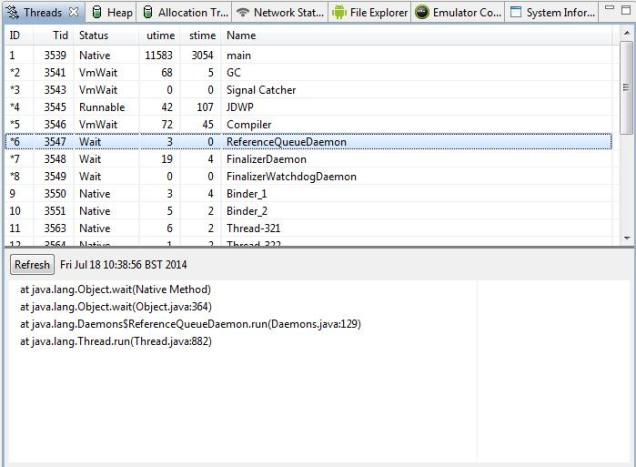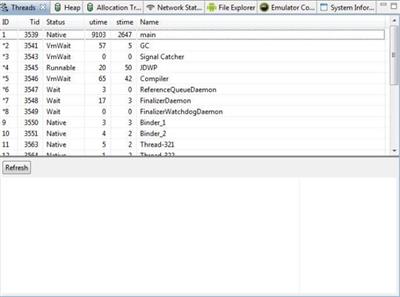

- #Threads android studio debugging install#
- #Threads android studio debugging for android#
- #Threads android studio debugging code#
- #Threads android studio debugging windows#
Hope this helps.In the last async debugging blog post, we explored several tools in Visual Studio to help you debug your async code. For more information about the command-line options you can use, run the following command:Īdb shell screenrecord –help, This works without rooting the device. The default settings are to use your device’s standard screen resolution, encode the video at a bitrate of 4Mbps, and set the maximum screen recording time to 180 seconds. Note that the screen recording is saved to your device’s internal storage, not to your computer. You can then find the screen recording file at the location you specified. When you’re done recording, press Ctrl+C (z in Linux) in the Command Prompt window to stop the screen recording. To start recording your device’s screen, run the following command:Īdb shell screenrecord /sdcard/example.mp4, This command will start recording your device’s screen using the default settings and save the resulting video to a file at /sdcard/example.mp4 file on your device. This only work in KitKat and via ADB only. See this article (opens new window) and this article (opens new window) for more information. The stream is then written to a file named screen.png within the current directory. The Perl expression this is piped into cleans up some end-of-line issues on Marshmallow and earlier. The -p flag redirects the output of the screencap command to stdout. Open a terminal in the device and type the following: The process is explained in detail in the following answer: (opens new window) The most important commands are shown below. # When you have a rooted device but don't have access to a USB cable Enabling it will give you the IP address and port number required to connect to adb by simply executing adb connect. Also, for certain devices (especially those with CyanogenMod ROMs) this option is present in the Developer Options among the Settings. Note: Some devices which are rooted can use the ADB WiFi App from the Play Store to enable this in a simple way. Once it gets connected you can unplug your USB. It will display a message whether your device is connected or not. Connect the device to the host computer via USB and click on this AndroidWiFiADB icon. You will see a new icon in your toolbar as shown in the following image.
#Threads android studio debugging install#
In order to do so, go to Settings > Plugins and Browse repositories, search for ADB WiFi, install it, and reopen Android Studio.

You can also connect ADB via WiFi by installing a plugin to Android Studio.
#Threads android studio debugging windows#
#Threads android studio debugging code#
#Threads android studio debugging for android#
Creating your own libraries for Android applications.Getting system font names and using the fonts.Hardware Button Events/Intents (PTT, LWP, etc.).Create Singleton Class for Toast Message.DayNight Theme (AppCompat v23.2 / API 14+).

Storing Files in Internal & External Storage.Supporting Screens With Different Resolutions, Sizes.Adding a FuseView to an Android Project.


 0 kommentar(er)
0 kommentar(er)
